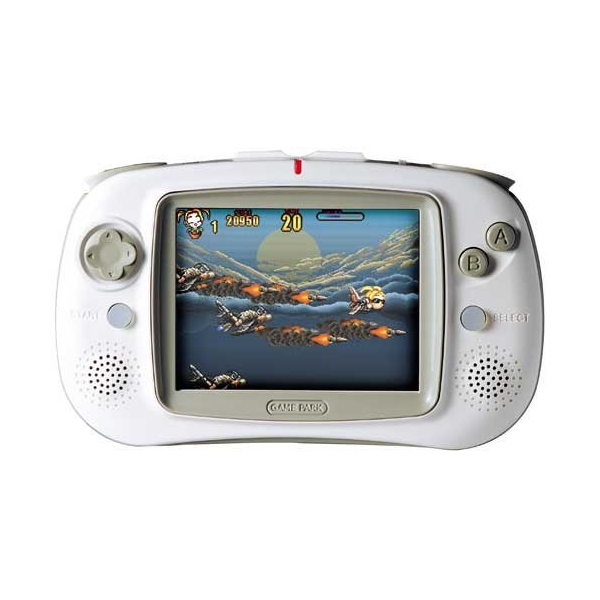|
History
After World War II , South Korea adopted a law that prohibited the import of Japanese electronics. Since most video game system after the second console generation were Japanese, Korea was depriving themselves from most new home video game innovation. Through some licensing scheme, companies were able to launch their consoles in the Korean market using Korean company. As such, Nintendo used Hyundai to release the Comboy (NES), Super Comboy (SNES) and Comboy 64 (Nintendo 64) while Sega partnered with Samsung to release the as Aladdin Boy (Master System), Super Aladdin Boy (Genesis), CD Aladdin Boy (Sega CD). In the end, pretty much all consoles were made available one way or another through this method (3D0 through LG, etc). But even with the availability of current gen console, the Korean video game console market never really bloomed. Instead, the video game scene was dominated by the PC and the Arcade.
In 1996, the South Korean government decided to intervene. They thought that by offering an all Korean video game system, they could break the Japanese monopoly in the video game industry and beat them at their own game. With that in mind, the government held a competition for a new video game system. The contest that Game Park won with their concept of a new portable video game system.
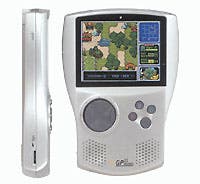 | 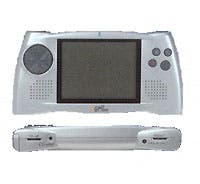 | 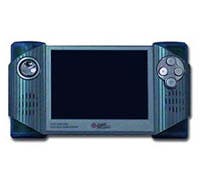 | 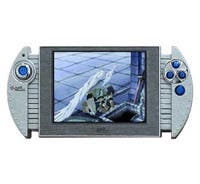 |
The world had to wait 4 years before seeing the first glimpse of the Game Park newest console. In 2000, during the Tokyo Game Show, the GP32 was finally unveiled. The first two models above were presented, but failed to but failed to catch any attention due to their inferior hardware and games. Taking note of the critics, Game Park continues development of their console. During the next year, other design concepts (two models on the right) were presented, but the biggest change was the internal hardware. With the specification of the upcoming release of the Game Boy Advance already out there, Game Park knew they had to be at least as powerful as a GBA to even stand a chance. With that in mind, Game Park upgraded the hardware and made it more powerful than Nintendo’s upcoming console.
Release
Released in exclusively in Korea on November 23, 2001, alongside 5 titles, the GP32 had a limited success. The system’s success hinged on being an open source handheld attractive to independent developers and capable of supporting video and audio playback. At its base, the GP32 would only run encrypted games and tools, but users could register their unit as a development unit and get a free suite of development tools to create their own programs.
On January 1, 2002, things took a turn for the worse, as South Korea finally allowed imports of Japanese electronics. Unable to compete locally against the mighty Game Boy advance, Game Park started to export the GP32 to Asia and Europe.
In late 2002, the game library was finally started to get interesting with 13 games released and additional 4 games set to be released in the next few weeks. To give a second breath to its handheld, Game Park released its first hardware revision to address the lack of luminosity of the screen. Dubbed the FLU (for Front Lighted Unit), the unit had no other improvement over the original GP32 . Instead of creating new hardware from scratch, Game Park subcontracted to Hahotech the responsibility to modify existing GP32 unit by adding a front light. This resulted in a raised display frame when compared to the original version.
By the end of 2003, the GP32 was still trailing very far behind the GBA. With only another 4 new games released in 2003 (for a total of 25 games), the console was pretty much a failure. It’s only redeeming factor was its open source concept. Although small, the homebrew scene was still very active. In a last ditch effort to make the system more attractive, Game Park released in mid-2004 a new version of the GP32 called the GP32 BLU for Back Lighted Unit. By the end of 2004, 3 new games were released on the systems and although very small, the demand for the GP32 was still there. A final hardware revision was made by the end of 2004, changing the LCD screen for a different model which sadly resulted in incompatibility with certain games and applications.
Demise
The demise of the GP32 started on it launch day. By failing to capture the Korean market, Game Park was forced to compete directly with Nintendo which had already an established brand and more importantly, an impressive line up of game developers. But the story could have been different for Game Park. The marking strategy was to offer PlayStation games on the GP32. As the PlayStation was not available in Korea, this could have been a huge plus for the device. To achieve this they pour a lot of money in porting PS1 game for the GP32. The sourcing was done locally, but as the PlayStation was not available in Korea, the developer had little to go on with. In the end, only Princess Maker 2 made it to the GP32, but in an unfinished stage as it was not translated in Korean. In the end, Game Park ended up spending a lot of money and had nothing to show for in return. If the plan would have been successful or if they would have used the money to create original games instead, the GP32 could have stood a chance. But with a merely 5 games at launch and 28 at the end of its life, the GP32 never had a convincing offering that could have swayed players to switch to this console.
As the main user based where from the home brew community, Game Park definitely dropped the GP32 in 2005 for a new console called the GP2x. The newest console from Game Park would be fully open source, running on Linux and would be dedicated to the home brew community as no game were ever officially released by Game Park for it.
Technical Specifications
- Screen: 3.5 in TFT, 16-bit colour, 320 × 240 pixels
- CPU: Samsung S3C2400X01 (ARM920T core) 133 MHz
- RAM: 8 MB SDRAM
- ROM: 512 KB
- SoundL 44.1 kHz 16-bit stereo sound
- Power : 2 × AA batteries or 3-V DC adapter
Special Edition
Very few special edition exist for this console.
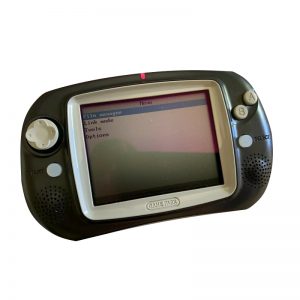 | 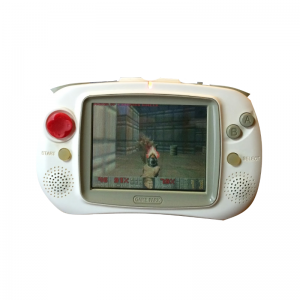 |  |  |
| Black Version Released in Collector Edition with Astonishia Story R | Normal Unit with Red D-Pad | Crystal Blue No additional information | Crystal Green Given in a contest |

